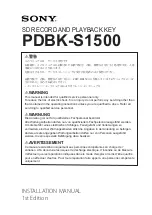
Introduction
The 6 to 75 V wide input voltage range
synchronous buck evaluation board features an extreme voltage
conversion ratio over switching frequency.
The board provides a regulated 5 V output at 230 kHz switching frequency. The output voltage can be easily set to 12 V using a
jumper connector. Different voltage output can be selected by changing a resistor to a lower V
IN
range.
The
is a 100 W demo board. The default maximum current is set to 15 A. It can be easily selected by
changing a resistor.
The evaluation board is based on the
synchronous buck controller, which implements the voltage mode in a VQFN
package with internal compensation to minimize the design complexity and size.
The diode emulation (DEM) implements the pulse-skipping mode, which maximizes the efficiency at light-load with a controlled
output voltage ripple.
The forced PWM (FPWM) over-the-load range makes the switching frequency constant and minimizes the output voltage ripple.
The power good open collector output validates the regulated output voltage for monitoring. It implements the output voltage
sequencing for digital ICs during the power-up phase.
The embedded gate driver is designed for standard Vth MOSFET and minimizes the number of external components.
The embedded protections, such as the output overcurrent, the input voltage UVLO, the internal voltage monitoring, and the
thermal shutdown at 150°C degrees, feature a controlled and safe operation for critical environments in telecom, networking,
and industrial applications.
You can use the
software tool to configure the
buck converter and satisfy the application requirements.
Figure 1.
STEVAL-L3751V12 evaluation board (top view)
Figure 2.
STEVAL-L3751V12 evaluation board (bottom view)
Getting started with the STEVAL-L3751V12 evaluation board based on DC-DC
converter buck regulator with L3751 controller
UM3024
User manual
UM3024
-
Rev 1
-
October 2022
For further information contact your local STMicroelectronics sales office.
www.st.com

































